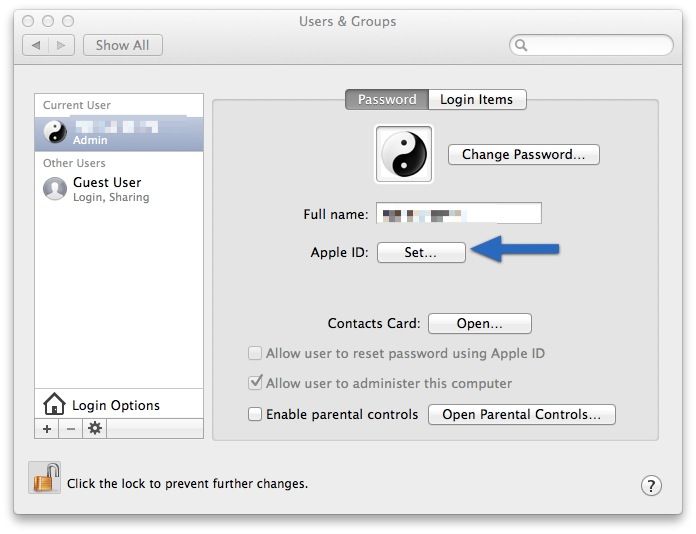Delete App Registry In Mac
Use Launchpad to delete an app
Launchpad offers a convenient way to delete apps that were downloaded from the App Store.
In the app list, click on all of the Microsoft Office apps. If there are too many apps to locate the Office apps, use. Type in the app's name and select it. Click on 'Clean' button. After the cleanup process, all of the Microsoft Office. There isn't a registry like with Windows. You can delete the application's preferences file. When removing applications I suggest backing up your drive in case you uninstall something you shouldn't have uninstalled.
- To open Launchpad, click it in the Dock or open it from your Applications folder. You can also pinch closed with your thumb and three fingers on your trackpad.
- If you don't see the app in Launchpad, type its name in the search field at the top of the screen. Or swipe right or left with two fingers on your trackpad to show the next or previous page.
- Press and hold the Option (⌥) key, or click and hold any app until the apps jiggle.
- Click next to the app that you want to delete, then click Delete to confirm. The app is deleted immediately. Apps that don't show either didn't come from the App Store or are required by your Mac. To delete an app that didn't come from the App Store, use the Finder instead.
Deleting an app doesn't cancel any subscription you may have purchased with that app. Learn how to cancel subscriptions for apps that were downloaded from the App Store.
Use the Finder to delete an app
- Locate the app in the Finder. Most apps are in your Applications folder, which you can open by clicking Applications in the sidebar of any Finder window. Or use Spotlight to find the app, then press and hold the Command (⌘) key while double-clicking the app in Spotlight.
- Drag the app to the Trash, or select the app and choose File > Move to Trash.
- If you're asked for a user name and password, enter the name and password of an administrator account on your Mac. This is probably the name and password you use to log in to your Mac.
- To delete the app, choose Finder > Empty Trash.
Learn more
To use an app again after deleting it, either reinstall it or restore it from a backup.
- To reinstall apps that were installed as part of macOS, reinstall macOS. This applies to apps such as Safari, iTunes, Books, Messages, Mail, Calendar, Photos, and FaceTime.
- You can also redownload apps, music, movies, TV shows, and books that were installed from the App Store, iTunes Store, or Apple Books.
Learn how to delete apps on your iPhone, iPad, and iPod touch.
Learn what to do if the Dock contains an icon with a question mark.
Startup items are the apps, shortcuts, folders, drivers, etc... that are set to run or open automatically at startup when a user signs in to Windows. Startup items can be added by either the programs or drivers installed, or manually by you.
This tutorial will show you how to manage startup items to add, delete, enable, or disable them for your account or for all users in Windows 10.
5 Steps total
Step 1: Open Registry Editor
Press the Windows + R keys to open the Run dialog, type regedit, and click/tap on OK to open Registry Editor. If prompted by UAC, and click/tap on Yes.
Step 2: To Delete Startup Programs for Only the 'Current User'
This will step only be applied to your currently signed in user account.
A) In Registry Editor, navigate to the locations below one at a time, and go to step 4 below.
HKEY_CURRENT_USERSoftwareMicrosoftWindowsCurrentVersionRun
HKEY_CURRENT_USERSoftwareMicrosoftWindowsCurrentVersionRunOnce
HKEY_CURRENT_USERSoftwareMicrosoftWindowsCurrentVersionExplorerStartupApprovedRun
HKEY_CURRENT_USERSoftwareMicrosoftWindowsCurrentVersionExplorerStartupApprovedRun32
HKEY_CURRENT_USERSoftwareMicrosoftWindowsCurrentVersionExplorerStartupApprovedStartupFolder
Delete Key On Mac
Step 3: To Delete Startup Programs for 'All Users'
You must be signed in as an administrator to be able to do this step.
A) In Registry Editor, navigate to the locations below one at a time, and go to step 4 below.
For both 32-bit and 64-bit Windows 10
HKEY_LOCAL_MACHINESOFTWAREMicrosoftWindowsCurrentVersionRun
HKEY_LOCAL_MACHINESOFTWAREMicrosoftWindowsCurrentVersionRunOnce
HKEY_LOCAL_MACHINESOFTWAREMicrosoftWindowsCurrentVersionExplorerStartupApprovedRun

HKEY_LOCAL_MACHINESOFTWAREMicrosoftWindowsCurrentVersionExplorerStartupApprovedRun32
HKEY_LOCAL_MACHINESOFTWAREMicrosoftWindowsCurrentVersionExplorerStartupApprovedStartupFolder

AND (If added by Group Policy)
HKEY_CURRENT_USERSoftwareMicrosoftWindowsCurrentVersionPoliciesExplorerRun
Delete App Registry In Mac Computer
AND (If added by Group Policy)
HKEY_LOCAL_MACHINESOFTWAREMicrosoftWindowsCurrentVersionPoliciesExplorerRun
In Addition for Only 64-bit Windows 10
HKEY_LOCAL_MACHINESOFTWAREWow6432NodeMicrosoftWindowsCurrentVersionRun
Delete App Registry In Mac Download
AND
HKEY_LOCAL_MACHINESOFTWAREWow6432NodeMicrosoftWindowsCurrentVersionRunOnce
Step 4: Delete startup items
In the right pane of the Run, Run32, RunOnce, or StartupFolder key right click or press and hold on a listed startup item that you would like to delete, and click/tap on Delete. (see screenshot below).
When prompted, click/tap on Yes to confirm.
Step 5: Close Registry Editor
When finished, you can close Registry Editor if you like.
References
- Remove startup program in registry editor